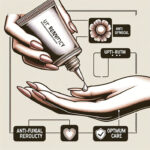Post-Black Toenail Care: Essential Tips You Need to Know.

Post-Black Toenail Care: Must-Know Tips to Get You Back on Your Feet
Discovering a black toenail can really catch you off guard and stir up some worry. Whether it shows up after a bump or falls victim to other factors, learning how to handle and care for it is key. In this friendly yet expert guide, we'll walk you through everything from immediate care after an injury to strategies for long-term maintenance, plus what to expect if professional help is needed. We’re here to offer you balanced, reliable advice drawn from years of experience—helping you tackle that black toenail with confidence.
Getting to Know Your Black Toenail: Causes and Concerns
How a Black Toenail Can Happen After an Injury
More often than not, a black toenail pops up after an injury. It’s usually due to blood pooling under the nail when trauma jostles those tiny blood vessels. Even something as simple as dropping a heavy object on your foot or harshly bumping your toe can set off this chain reaction. Essentially, the injury causes bleeding beneath the nail, and as the blood slowly fades, it darkens. Although this condition is generally benign, understanding what sparked it can help you decide if you need extra care or intervention.
If you see a black spot on your toe, it's natural to worry—after all, you’re thinking, “How bad is it really?” But most times, your body jumps into gear with its own healing process. Paying attention to details like the force of the injury, how much pain you're feeling, or if there’s noticeable swelling will help you figure out whether the discoloration is just a cosmetic hiccup or something more serious.
Spotting the Difference: Minor vs. Serious Black Toenail Cases
Not all black toenails scream for an emergency room visit. Many times, simple bruising heals on its own as your nail grows out and the damaged part gets replaced. But if you're experiencing sharp pain, significant swelling, or ongoing discomfort, that might be a red flag. For example, if your nail gets noticeably thicker, turns brittle, or shows other signs of damage, it could be hinting at an infection or another complication. Knowing the difference between a minor bruise and a more severe injury can ease your mind and steer you in the right direction.
Keeping a close eye on how your toe evolves in the days after the injury is a smart move. Look out for dramatic changes in color, a spike in pain, or signs that an infection is taking hold. Trust your gut—if something feels off, it’s better to get a second opinion. That keen observation could be your ticket to preventing any future complications.
When to Call in the Pros
While many black toenails will clear up on their own, there are certain situations where it’s wise to see a doctor. If you have intense pain, notice infection signs like pus or significant swelling, or if your toe starts feeling numb, it’s time to make an appointment. And if you’re dealing with conditions like diabetes or a weakened immune system, consulting a podiatrist sooner rather than later can ward off potential complications. It’s all about catching the problem early before it turns into something more serious.
Also, if every step feels like trudging through mud or simple activities become a challenge, don’t hesitate to seek professional help. Trust your instincts—your health should always come first. Early intervention can be the saving grace that stops a minor issue from spiraling into something chronic.
Quick-Fix Strategies for Immediate Black Toenail Care
First Aid Essentials for a Bad Toenail Beat
Those first few moments after a toe injury are crucial in setting you up for a smoother recovery. Start by gently cleaning your toe with some mild soap and water to clear out any dirt. Once it's dry, try a cold compress on the spot for around 15 minutes to help ease swelling and numb the pain. Keeping the toe elevated can also do wonders, as it not only reduces swelling but also slows down any stubborn bleeding under the nail.
While you’re taking care of your toe, be gentle—avoid putting too much pressure on it. If you need some extra comfort, an over-the-counter pain reliever can help reduce the discomfort. These quick steps can nip potential complications in the bud and kickstart your body’s natural healing process.
Home Remedies to Calm That Aching Toe
Along with basic first aid, there are several home remedies that can soothe the pain of a black toenail. A warm saltwater soak can work wonders by boosting blood circulation and reducing swelling, and adding a few drops of essential oils like lavender or tea tree can up the soothing factor. Sometimes, a dab of antiseptic cream around the nail can help ward off infections while easing the ache. Just remember, these are just supportive tricks and not replacements for professional advice—especially if things seem to be getting worse.
Many folks find that alternating between warm soaks and cold compresses strikes the perfect balance. The cold helps bring immediate relief by reducing swelling, while the warmth supports healing over time. Mix and match these remedies in your daily routine, and you might just find your comfort levels steadily improving as your body does its thing.
At-Home Treatments for Black Toenail Discoloration
Safe and Simple Home Treatments for Recovery
Once the sharp pain has calmed down, you can shift your focus to treatments that target discoloration and promote healthy nail regrowth. Home treatments can be both effective and budget-friendly. One popular method is to trim the nail carefully, removing any loose or damaged parts without disturbing the tender skin beneath. Keeping everything clean is a must to ward off bacteria, and using a gentle, fragrance-free lotion can help keep the skin and nail bed nourished, encouraging a speedy recovery.
Don’t forget that your diet plays a part too! Eating foods rich in vitamins like biotin, zinc, and vitamin E can strengthen nail growth and speed up healing. Although home treatments work well for many, if you notice the discoloration worsening or unexpected symptoms cropping up, it's best to check in with a healthcare provider.
The Do's and Don'ts of Caring for Your Black Toenail
When tending to a black toenail at home, finding a balance is key. It’s a smart move to keep the nail clean and steer clear of activities that put too much pressure on the toe. Choosing supportive footwear can also help cushion your injury while it heals. On the flip side, don’t rush into using harsh chemicals or trying to yank the nail off yourself—unless a professional says otherwise. Overdoing it could hurt the nail bed and invite an infection.
Be careful with aggressive trimming, too. Buffing the discoloration aggressively might do more harm than good. The best strategy is to maintain a simple, consistent routine: regular cleaning, moisturizing, and a keen eye on any changes while avoiding any treatments that might worsen the situation.
When and How to Seek Professional Treatments
What Happens When You Visit a Podiatrist for a Black Toenail?
If home care isn’t cutting it, a visit to your podiatrist is the next logical step. At your appointment, expect a thorough chat about your injury history and symptoms, along with a detailed look at your toe. Sometimes, your doctor might even order an X-ray to check for fractures or deeper tissue damage. They’ll likely ask about your overall foot care routine and any health issues that could be playing a part. This personalized care helps craft a treatment plan tailored just for you, ensuring a robust, long-lasting recovery.
It always helps to come prepared with questions and details about what you’ve tried so far. Sharing information about your daily habits and any changes you’ve noticed can make a big difference. This open dialogue not only builds trust but also demystifies the entire treatment process, leaving you feeling more comfortable about the steps ahead.
Advanced Treatments for Stubborn Black Toenail Issues
For those situations where a black toenail just won't budge from causing trouble, more advanced procedures might be on the table. Depending on how persistent or severe the issue is, your podiatrist may recommend a minor surgical intervention to relieve pressure or drain any built-up blood. These procedures are typically done under local anesthesia, so discomfort is kept to a minimum. Other professional treatments might include specialized medications or high-tech treatments designed to kickstart nail regrowth. Such options are especially valuable when conservative measures fall short.
While these advanced procedures might sound daunting, they usually boast high success rates and help speed up recovery significantly. Make sure you understand all the risks and benefits before proceeding by asking questions—this way, you’re not going into it blind. With clear, expert guidance at every step, you can be confident about making the right decisions for your foot health.
Tips to Prevent Future Black Toenail Injuries
How to Keep Your Toes Safe and Sound
Believe it or not, preventing a black toenail is a whole lot easier than treating one. Simple steps, like choosing the right footwear for high-impact activities, make a world of difference. Opt for shoes that offer good cushioning and support to absorb shocks and lessen the impact on your toes. There are even protective toe caps you can invest in—perfect for those whose daily routines put extra stress on their feet. Taking these precautions not only cuts down the risk of injury now but also helps maintain overall foot health in the long run.
Be mindful during sports or even while going about your everyday activities at work. Sometimes, a little extra care—like wearing safety boots or well-fitted athletic shoes—can really pay off. These small adjustments may seem minor, but they are a proactive investment in your well-being.
Daily Habits for Healthy Toenails
Keeping your toenails in tip-top shape is easier than you might think. A daily routine that includes gentle cleaning and moisturizing can do wonders for the nail bed. Regular self-checks are also a great idea—not only do they help catch any early signs of trouble, but they also keep you tuned in to your foot health. And don’t forget about proper nail trimming; keeping your nails at a manageable length helps prevent accidental bumps and further injuries.
You might also want to try some gentle exercises to boost circulation in your feet. Better blood flow can jumpstart the healing process and promote overall nail health. With consistent care, you’re not only managing any current issues—you’re also setting the stage for strong, healthy nails down the road.
Keeping an Eye on Your Healing Journey
Signs That Your Black Toenail is On the Mend
As you work through recovery, it’s uplifting to spot the little wins along the way. You’ll likely notice the dark discoloration gradually fading, a drop in pain levels, and healthier nail growth emerging from the base. Over time, the swelling should go down, and the overall look and feel of your toenail will start to improve. Keeping track of these day-by-day changes can help confirm that your current treatment is doing its job.
Regular self-examinations are key; jot down any positive changes or things that seem a bit off. This record can be a lifesaver if you ever need to consult a professional later on. By noticing these progress markers, you empower yourself to tweak your care routine to best fit your healing pace—all while staying positive and proactive about your recovery journey.





